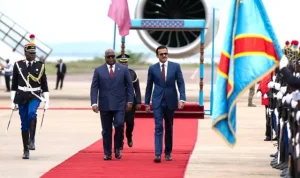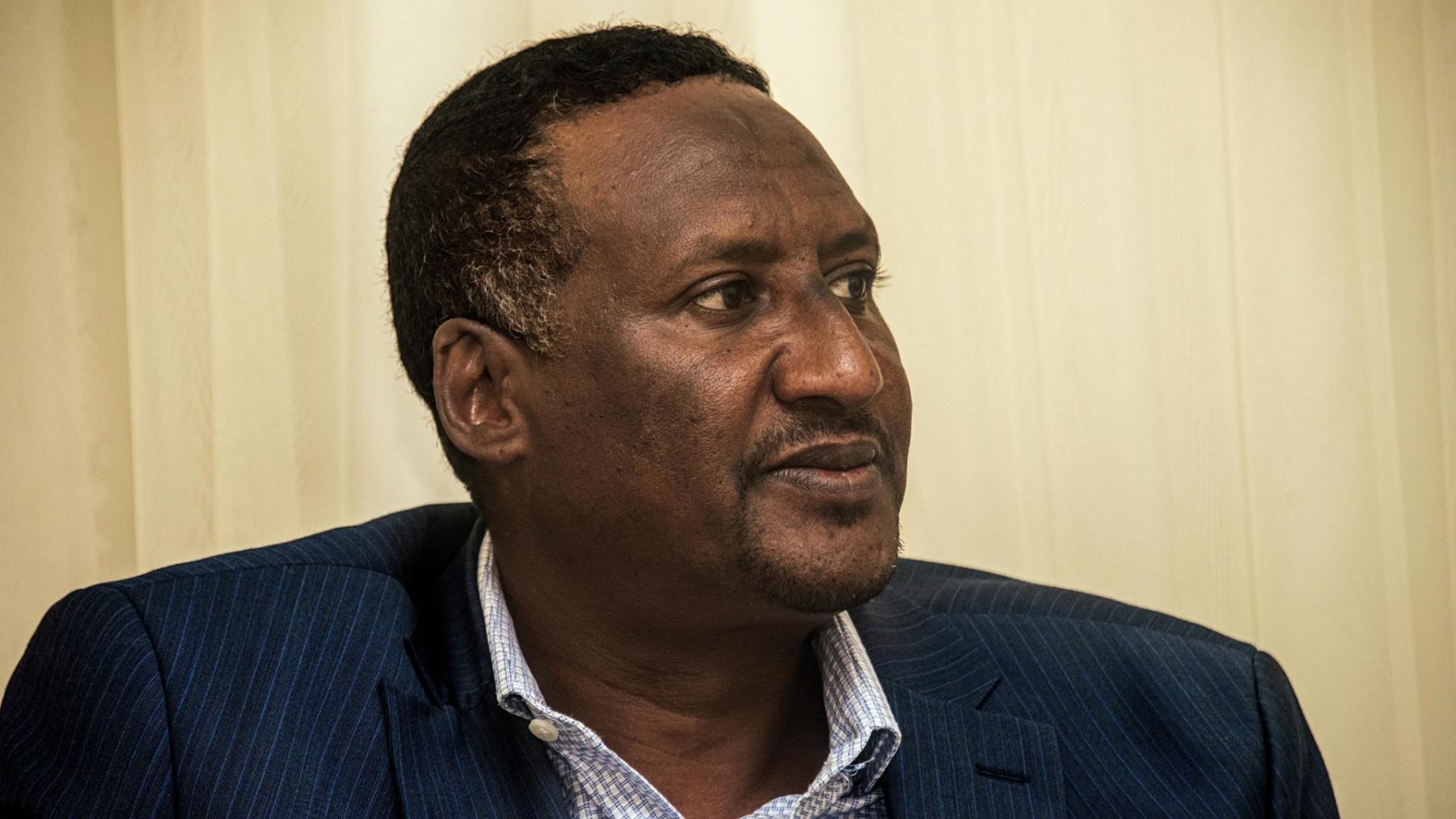What are the Algerian-Mali tensions really about?

When a Malian drone exploded in the Saharan night on 31 March, the Sahel once again became the epicentre of a military crisis. Diplomatic smoke screens erupted over the desert, smearing the dispute in a complex web of disinformation. In the barren wastelands of northern Mali, dawning different clothes and talking in foreign tongues, the world’s superpowers were clashing again. Like a timeless Bond flick, a story of forgotten rebels, untold desert treasure and – of course – fickle Russians, was unravelling.

The Turkish-manufactured Akinci surveillance drone was claimed by its alleged annihilators, Algiers, to have penetrated 1.6km beyond the Malian border into Algerian airspace, disregarding evidence that the UAV wreckage was found at least 9.5km inside Mali. Whether or not the incident was staged, both sides embraced the fallout. After Algiers and Bamako closed their airspace to one another, the spat escalated further, with diplomats recalled on both sides, as well as those of Mali’s allies, Niger and Burkina Faso. While Mali accused Algeria of “sponsoring international terrorism”, referencing the jihadi and Tuareg separatist groups littered across its northern frontiers, the T word in typical fashion obscured material realities. What exactly happened is not clear, but interests are always telling.
Africa is a continent awash in natural resources and desperate for wealth. Producing 680.3 metric tons of gold annually, its accounts for nearly a quarter of global production. However, its abundance comes at a terrible price – a post-colonial network of foreign actors locked in a deadly game of geo-economic control.

Mali was the continent’s 2nd highest producer of gold after Ghana in 2023, mining over 105 metric tons. While nearly all its production originates in the government controlled south, the north of Mali holds promising deposits of the rare mineral, as well as unexplored oil fields and potential uranium sites. But the sand swept north is also a wild west, ruled by a confederation of militias who declare the region the Islamic State of Azawad. With the area contested, only small artisanal gold mining remains active, leaving the region’s potential largely untapped.
As Shirley Bassey sings in ‘Goldfinger’, “the man with the Midas touch” is Vladimir Putin. As the West, particularly the French, have been sent packing by the newly sprung regimes of Mali, Niger, Burkina Faso and Chad, Moscow has stepped into the void. The Gold-hungry Russians need the rare mineral to finance Ukraine and fortify their economy. Violent and unstable, the territory, pot-marked with jihadi groups and tribal paramilitaries, has been fertile ground for the Kremlin’s security driven foreign policy. The notorious Wagner PMC and Russia’s Africa Corps have taken up the Francafrique gauntlet, boosting the local regimes’ appetite for aggressive, kinetic action.

The Malian Army and its Wagner partners retook swathes of land from Azawad in 2023, capturing the key rebel stronghold of Kidal in November. The 2015 Algiers Accord, a peace agreement key to Mali’s stability, was torn up and government forces pressed forward. While Mali and Wagner suffered a disastrous defeat in the wastelands around Tinzaouaten, near the Algerian border, revenge drone strikes in December 2024 reportedly killed eight Tuareg rebel leaders in the same area.
The Mali offensive is right out of Moscow’s play book. Providing security via Wagner to the Central African Republic (CAR) after the French departure in 2017, Russia has demonstrated its model for success. The PMC transformed the country’s inert artisanal gold mining into a thriving industrial behemoth. Valued between $1bn to $2.8bn, the Ndassima mine in CAR has been placed under the Russian shell company Midas Resources and has undergone significant expansion. In Mali, Russia signed an agreement with the government in November 2023 to finance and build a gold refinery in the capital Bamako, with ambitions to produce 200 tonnes per year – over three times the country’s total output in 2022. The exchange of military support for resource access – guns for gold – seems a winning formula for the Kremlin, but where it leads can be very dark indeed.

In Sudan, where a civil war has created the world’s largest humanitarian crisis, Russia has been accused of supporting both sides. The paramilitary Rapid Support Forces (RSF) is allegedly receiving arms from the UAE through Wagner’s ground forces, while Moscow offers the recognised government weapons of their own. Gold appears again, as Samuel Ramadi, author of the book Russia in Africa, told Al Jazeera. Support for the RSF is “primarily aimed at creating a smuggling route for the gold from Sudan to Dubai and then to Russia so that they can fund Wagner Group operations inside Ukraine.” Here, where the need for security is most dire, is also where greed glints in the Kremlin’s eyes. Their strategy feeds on instability, and with more Russian firepower comes more Russian control. Concessions are made and deals are struck, and with a hop in their step, Putin’s gunmen and industry goblins move in to extract the lifeblood of African economies. Just as in divided Libya where Khalifa Haftar, the east’s commander-in-chief sold Moscow his soul for his preservation, the Sahel has become blackly wedded to Putin’s military-industrial complex.
So why doesn’t Algiers just join the party, especially given its oft cited alignment with Moscow? A joint Algeria-Mali-Wagner operation would overwhelm the rebels and send them running to the dunes. High security mining compounds could then guarantee safe mineral extraction and facilitate a thriving industry. The insurgency hangover could be contained by multilateral operations – a small price to pay for shares in a gold rush. Algiers should also want to remain cordial with the Sahel states more broadly if it is to continue to develop plans for a trans-Saharan pipeline to Nigeria. Why is it then, that Algeria is so unwilling to work with Moscow on this one?

At a geopolitical flashpoint between Russia and the West, it seems Algiers favours the West more than it lets on. In January, Algeria signed “a first of its kind” agreement to expand military cooperation with the US. Remarkable given the noxious support of Washington for Moroccan rule in Western Sahara, some predict the new U.S.-Algeria Defense Cooperation Memorandum of Understanding was about curbing Russia’s influence in northern Africa. The war in Ukraine has shaken up the international order and looks to have tilted Algerian foreign policy. In April 2023, Algiers made a critical juncture, voting in favour of a UN General Assembly resolution recognizing “the aggression by the Russian Federation against Ukraine.” With the blowing up of the Nord Stream pipeline, Algeria has become even more critical to European oil and gas supplies. As independent as it purports to be, the EU makes up over two thirds of Algiers export trade, anchoring it willingly or unwillingly to Europe. The West has aligned Tebboune to their cause and his new role – harrying Russian dominance in the Sahel.
But there may be more to the story from an Algerian perspective. As mentioned, Mali has a massive potential for oil in the far north, along the Taoudeni Basin. Its high potential for oil has been a source of speculation for decades. In 2007, the Algerian company Sonatrach was granted exploration rights but according to Sene News, the results were never shared with the public. The instability following the 2012 rebellion, led the company to suspend its operations but many suspect this was a strategic move to maintain Algerian control over the resource-rich area. To this day it is unknown what they found in the desolate plains of the Taoudeni Basin but the silence is perhaps telling.

While Tuareg rebels and jihadists have presided over northern Mali for over a decade, it seems new forces have entered northern Africa. The tensions with Algeria are indicative of a new geopolitical fault line, where again East meets West in a struggle for control over resources and influence. Each player will not leave it to chance. If indeed the drone was destroyed by Azawad forces as they themselves claimed, the surface-to-air missiles required for such a task would illustrate an escalation in the group’s abilities. It is not far-fetched to imagine further overhaul of the rebel’s tactics and weaponry in the coming months. The flammable concoction of foreign interests is everywhere and all it takes is a big enough spark to set loose a conflagration.

Want to chase the pulse of North Africa?
Subscribe to receive our FREE weekly PDF magazine













